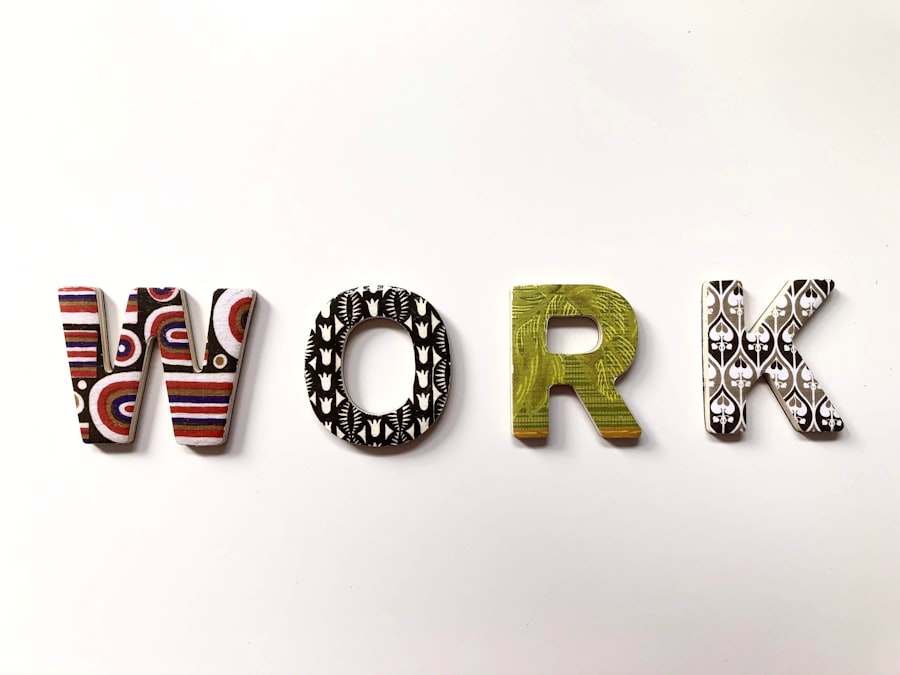Efficiency is a term that often gets thrown around in both personal and professional contexts, but what does it truly mean for you? At its core, efficiency refers to the ability to accomplish a task with the least amount of wasted time and resources. It’s about maximizing output while minimizing input, which can lead to significant improvements in productivity.
When you grasp the essence of efficiency, you begin to see how it can transform your daily routines and overall effectiveness. You might find that by honing in on this concept, you can achieve more in less time, allowing for a better work-life balance. To truly understand efficiency, you must also recognize its relationship with effectiveness.
While efficiency focuses on doing things right, effectiveness is about doing the right things. This distinction is crucial for you as you navigate your tasks and responsibilities. You may be efficient in completing a task, but if that task isn’t aligned with your goals or priorities, your efforts may be in vain.
Therefore, understanding efficiency involves not just optimizing your processes but also ensuring that those processes contribute meaningfully to your objectives.
Key Takeaways
- Efficiency is about achieving maximum productivity with minimum wasted effort or expense.
- Identify and eliminate time-wasting activities to improve overall efficiency.
- Prioritize tasks based on their impact and urgency to maximize productivity.
- Set clear and achievable goals to stay focused and motivated.
- Implement time management techniques such as the Pomodoro technique to improve productivity.
Identifying time-wasting activities
As you strive for greater efficiency, one of the first steps is to identify activities that waste your time. These time-wasting activities can be insidious; they often masquerade as productive tasks or necessary obligations. You might find yourself caught up in endless meetings, scrolling through social media, or responding to non-urgent emails.
By taking a closer look at how you spend your time, you can pinpoint these distractions and begin to eliminate them from your routine. To effectively identify these activities, consider keeping a time log for a week. Document how you spend each hour of your day, noting any tasks that feel unproductive or draining.
After reviewing your log, you may discover patterns that reveal where your time is being squandered. This awareness is the first step toward reclaiming those lost hours and redirecting them toward more meaningful pursuits. By recognizing these time-wasting activities, you empower yourself to make conscious choices about how you allocate your time moving forward.
Prioritizing tasks for maximum impact

Once you’ve identified time-wasting activities, the next step is prioritizing your tasks for maximum impact. Not all tasks are created equal; some will have a more significant effect on your goals than others. You may find it helpful to categorize your tasks based on urgency and importance.
The Eisenhower Matrix is a popular tool that can assist you in this process, allowing you to distinguish between what needs immediate attention and what can be scheduled for later.
You might be tempted to tackle smaller, easier tasks first for a quick sense of accomplishment, but this approach can lead to neglecting more critical responsibilities.
Instead, focus on high-impact tasks that align with your goals and values. By doing so, you ensure that your efforts contribute meaningfully to your overall success and satisfaction.
Setting clear and achievable goals
| Metrics | Results |
|---|---|
| Number of goals set | 25 |
| Percentage of achieved goals | 80% |
| Time taken to achieve goals | 3 months |
Setting clear and achievable goals is essential for maintaining focus and motivation in your quest for efficiency. Goals provide direction and purpose, helping you stay aligned with your priorities. When crafting your goals, ensure they are specific, measurable, attainable, relevant, and time-bound (SMART).
This framework can guide you in creating objectives that are not only realistic but also inspiring. As you set these goals, take the time to reflect on what truly matters to you. Consider both short-term and long-term aspirations, as they will inform your daily actions and decisions.
By having a clear vision of what you want to achieve, you can better allocate your time and resources toward those ends. Remember that goal-setting is not a one-time event; it requires regular review and adjustment as circumstances change and new opportunities arise.
Implementing time management techniques
With clear goals in place, it’s time to implement effective time management techniques that will help you stay on track. One popular method is the Pomodoro Technique, which involves working in focused bursts of 25 minutes followed by short breaks. This approach can enhance your concentration and prevent burnout by allowing you to recharge regularly.
You might find that breaking your work into manageable intervals makes daunting tasks feel more achievable. Another technique worth exploring is time blocking, where you allocate specific blocks of time for different activities throughout your day. This method encourages you to dedicate uninterrupted periods to high-priority tasks while also ensuring that you set aside time for less urgent responsibilities.
By structuring your day in this way, you create a roadmap that guides your actions and helps prevent distractions from derailing your progress.
Delegating tasks effectively

As you work toward greater efficiency, don’t underestimate the power of delegation. Many individuals struggle with the idea of handing off tasks, often believing that they must do everything themselves to ensure quality results.
To delegate effectively, start by identifying tasks that can be handled by others without compromising quality. Consider the strengths and weaknesses of your team members or colleagues when assigning responsibilities. Clear communication is key; ensure that those taking on delegated tasks understand the expectations and deadlines involved.
By fostering a collaborative environment where everyone feels valued and engaged, you not only enhance efficiency but also build a stronger team dynamic.
Streamlining work processes
Streamlining work processes is another vital aspect of achieving efficiency in your daily routine. Take a step back and evaluate how tasks are currently being completed within your workflow. Are there unnecessary steps or redundancies that could be eliminated?
By simplifying processes, you can reduce the time spent on each task while maintaining quality outcomes. One effective way to streamline processes is through standardization. Creating templates or checklists for recurring tasks can save you time and mental energy in the long run.
Additionally, consider conducting regular reviews of your workflows to identify areas for improvement. By continuously seeking ways to optimize how work gets done, you position yourself for sustained efficiency over time.
Eliminating distractions and interruptions
In today’s fast-paced world, distractions and interruptions are constant challenges that can derail your focus and productivity. To enhance your efficiency, it’s crucial to identify these distractions and take proactive steps to minimize them. Start by assessing your work environment; are there elements that consistently pull your attention away from important tasks?
This could include noisy surroundings, cluttered spaces, or even digital notifications. Once you’ve identified potential distractions, implement strategies to mitigate them. For instance, consider setting specific times during the day to check emails or messages rather than allowing them to interrupt your workflow constantly.
You might also find it helpful to create a designated workspace that fosters concentration and minimizes interruptions from others. By taking control of your environment, you empower yourself to maintain focus on what truly matters.
Utilizing technology to automate tasks
In an age where technology plays an integral role in our lives, leveraging automation can significantly enhance your efficiency. Many repetitive tasks can be automated using various tools and software available today. For example, consider using project management software to track progress on tasks or employing scheduling tools to manage appointments seamlessly.
Automation not only saves time but also reduces the likelihood of human error in routine tasks. As you explore different technological solutions, think about which aspects of your workflow could benefit from automation. By embracing these tools, you free up mental bandwidth for more strategic thinking and creative problem-solving.
Taking regular breaks to recharge
While it may seem counterintuitive, taking regular breaks is essential for maintaining long-term efficiency. Working for extended periods without rest can lead to burnout and decreased productivity over time. By incorporating short breaks into your routine, you allow yourself the opportunity to recharge both mentally and physically.
Consider implementing techniques such as the 52/17 rule—working for 52 minutes followed by a 17-minute break—to optimize your focus and energy levels throughout the day. During these breaks, engage in activities that help clear your mind, such as stretching, going for a walk, or practicing mindfulness exercises. By prioritizing self-care through regular breaks, you enhance not only your efficiency but also your overall well-being.
Evaluating and adjusting your approach for continuous improvement
Finally, achieving efficiency is an ongoing journey rather than a destination. To ensure that you’re continually improving your approach, make it a habit to evaluate your progress regularly. Reflect on what strategies have worked well for you and which areas still need refinement.
This self-assessment allows you to adapt and evolve as circumstances change. Consider setting aside time each month or quarter for this evaluation process. During this reflection period, ask yourself questions about your productivity levels, goal attainment, and overall satisfaction with how you’re spending your time.
By remaining open to change and willing to adjust your methods as needed, you’ll cultivate a mindset of continuous improvement that will serve you well in all aspects of life. In conclusion, embracing efficiency requires a multifaceted approach that encompasses understanding its core principles, identifying obstacles, prioritizing effectively, setting clear goals, implementing management techniques, delegating wisely, streamlining processes, eliminating distractions, utilizing technology, taking breaks, and committing to ongoing evaluation and adjustment. By integrating these strategies into your daily routine, you’ll not only enhance your productivity but also create a more fulfilling and balanced life.
In today’s fast-paced world, the concept of working less while achieving more is gaining traction among professionals seeking a balanced lifestyle. A related article that delves into this topic can be found on How Wealth Grows, which explores strategies for maximizing productivity without overextending oneself. This insightful piece offers practical tips and techniques to streamline your workflow and enhance efficiency. For more information, you can read the full article by visiting How Wealth Grows.
HERE IS WHY Most Careers Are Designed To Fail
FAQs
What are some strategies for working less and achieving more?
Some strategies for working less and achieving more include prioritizing tasks, setting boundaries, delegating responsibilities, and utilizing time management techniques.
How can setting boundaries help in working less and achieving more?
Setting boundaries can help in working less and achieving more by allowing individuals to focus on their most important tasks, avoid burnout, and maintain a healthy work-life balance.
What are some time management techniques that can help in working less and achieving more?
Time management techniques such as the Pomodoro Technique, batching similar tasks together, and using to-do lists can help individuals work more efficiently and accomplish more in less time.
How can delegating responsibilities help in working less and achieving more?
Delegating responsibilities can help in working less and achieving more by allowing individuals to focus on their strengths and high-priority tasks, while also empowering and developing the skills of their team members.
Why is prioritizing tasks important in working less and achieving more?
Prioritizing tasks is important in working less and achieving more because it allows individuals to focus on the most important and impactful activities, leading to greater productivity and efficiency.
